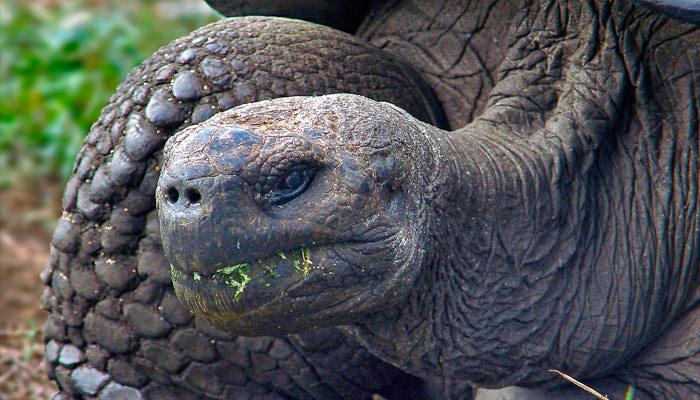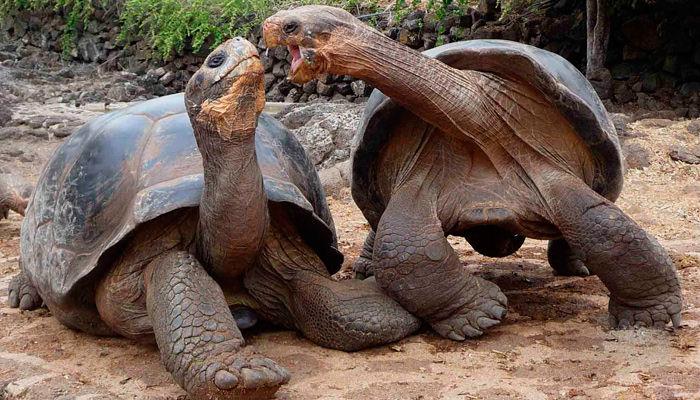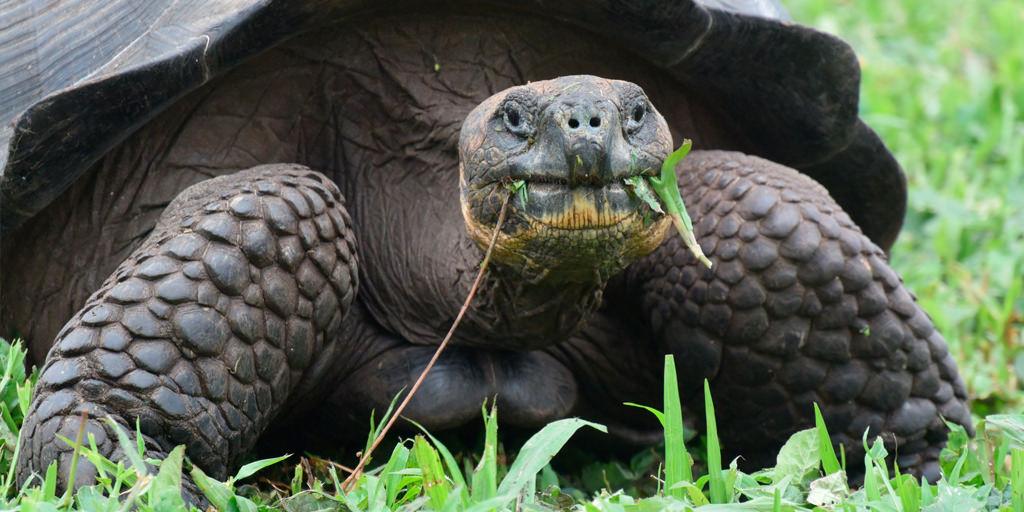Some interesting Galapagos Giant Tortoise Facts
Galapagos Giant tortoise facts. The Galapagos Islands are indeep very famous for its evolutionary history and diversified flora and fauna. The blue sea water, the variety of colored soils and abundance of endemic species of animals and birds are all major attractions for travelers. But nothing fascinates travelers and scientific community alike than the chance to get a close view of the giant tortoises. Commonly known as Galapagos tortoises or Galapagos giant tortoises.
Quick Facts

Galapagos tortoises are the world’s largest tortoises. There are some types of these that exceed 5 feet (1.5 meters) in length and weigh almost 550 pounds (250 kilograms). Their large bodies are covered by a protective layer of a hard shell, which is dull brown in color. Their shells are of two types; dome shaped and saddle-back. They mostly live on grasses, berries, lichens and leaves. These tortoises have a very high longevity, ranging from 155 to 175 years. They are mostly found in Isabela, Floreana, Pinta and Santa Cruz islets of the Ecuador Galapagos Islands.
The longer life span of the tortoises has been a subject of great researches all over the world. The average life of these tortoises is 155 years. There are various reasons as to how they can survive for such a long time, some of which are mentioned below:
Why do they live longer?

- Storage of water and moisture. They acquire a lot of moisture from the sap present in the vegetation they eat and from dew. They can drink a lot of water quickly when thirsty and can store it in the root of their necks and in bladders, which work as storage tanks. Therefore, they survive for a long time without food and water, which could be even as long as 18 months.
- Metabolism: Another reason of such long life is their metabolism. Humans have higher rates of metabolism because they can create heat inside their own body through the oxygen that they breathe in. The oxygen, by diffusing into their cells, produces heat, which breaks down the complex molecules of their food into simpler molecules. This process drives their metabolic activities. However, this fast activity gives rise to hazardous by-products which can damage their DNA, which is precisely the Reactive-oxygen-species (ROS). These ROS are charged molecules that lead cells to mutate and malfunction. On the contrary, the tortoises take heat from sunlight to fuel their metabolism, create lesser ROS, produce very less harmful by-products and thus enjoy a long life!
- Shells. The long life of these tortoises can be attributed to their shell. Which is made of hard bone plates that contain keratin. The hard structure of their shells protect them from any physical injury like attack from wild animals and harsh weather conditions, while keratin present in the bone helps them from any kind of infection. Coupled with a strong bodily structure and a good defense mechanism, these tortoises become biologically immune to any harm from nature.
Conservation Efforts
The Galapagos tortoises face a great danger of extinction. They take 40 years after birth to mature sexually and lay eggs after very long intervals. As a result, their population is very low. The baby tortoises also have a threat from other wild animals. After being hunted by humans for the last two centuries, their numbers have reduced to almost 15,000 today. Therefore, the government of Ecuador has taken strict actions against hunting of these endangered species and encouraged breeding campaigns in association with the Darwin Research Station.
These tortoises are the eye-candies to cherish when someone visits the Galapagos Islands as a part of their Ecuador tours. So, the next time you come here, make sure to set a date with these tortoises.



Comments